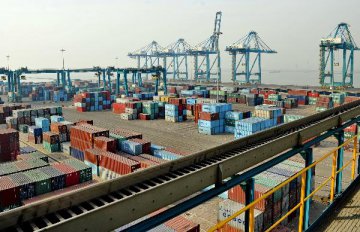
With ample development room, solid growth foundations and abundant policy tools, China is believed to be able to continue to deliver above-6.5 percent GDP expansion in the next five years.
China is and will be a developing country for some time, yet its development gap with Western countries will gradually narrow, a process that will continuously create new demand and supply. For instance, car ownership in China was 106 to every 1,000 people in 2014, compared with 800 in the United States, 620 in Germany and 340 in the Republic of Korea.
Lavish Chinese shoppers spend big on high-end products during overseas trips, indicating that domestic enterprises could earn big if meet such demand. China's urbanization rate in terms of registered urbanites is lower than 40 percent, compared with an average of 70 percent in developed countries and 60 percent in developing countries with similar per capita income.
Rapid urbanization will last for many years, and can bring about a broad range of investment opportunities from homes and underground pipelines to railways and roads. While China is phasing out energy-intensive and non-competitive factories, it is fostering the growth of new sectors including advanced equipment manufacturing, new materials, new energy, information technology and biotechnology.
These emerging business will continuously supply new products and services, thus, resulting in new demand. Increasingly well-off Chinese are willing and financially able to consume. People born after 1980 spend 40 percent more than earlier generations, according to research by the Alibaba Group and the Boston Consulting Group.
Robust e-commerce and convenient delivery services have connected nearly every part of China, meaning there is ample room to further tap in to consumption potential. China's consumers are feeling confident and upbeat despite the economic slowdown, beating the global average and most regional peers, according to a survey by market research firm Nielsen.
In an epitome of exploding online transaction, sales revenue for Alibaba's Tmall marketplace totalled 91.2 billion yuan (14 billion U.S. dollars) during the "Single's Day" shopping spree last November, surging 60 percent year on year. Although ailing global demand has substantially dragged down China's foreign trade, the government-pushed exports of advanced industrial production capacity and cooperation with countries along the Belt and Road will open new frontier of overseas-driven growth.
Every year over 7 million college graduates -- more than the population of some countries -- enter the workforce, which may be shrinking in quantity in an aging China but increasing in quality. Although young people are now more willing to spend, the Chinese are much more inclined than Westerners to save, which ensures abundant capital in the banking system to fund economic expansion.
China's interest rates are at relatively high levels compared with near-zero rates in many developed countries. In the next five years, policy makers can further lower interest rates and reduce the amount banks must hold as reserve to boost investment and consumption.
Despite recent drops, China still holds the world's largest foreign exchange reserve, which is a powerful weapon and can be used to cushion financial volatility. The government could also continue to loosen its grip on the market and open up more sectors to private investors.
To accomplish the target of building a moderately prosperous society in all respects, China needs to maintain its growth momentum. And the country is able to do that.
























Latest comments